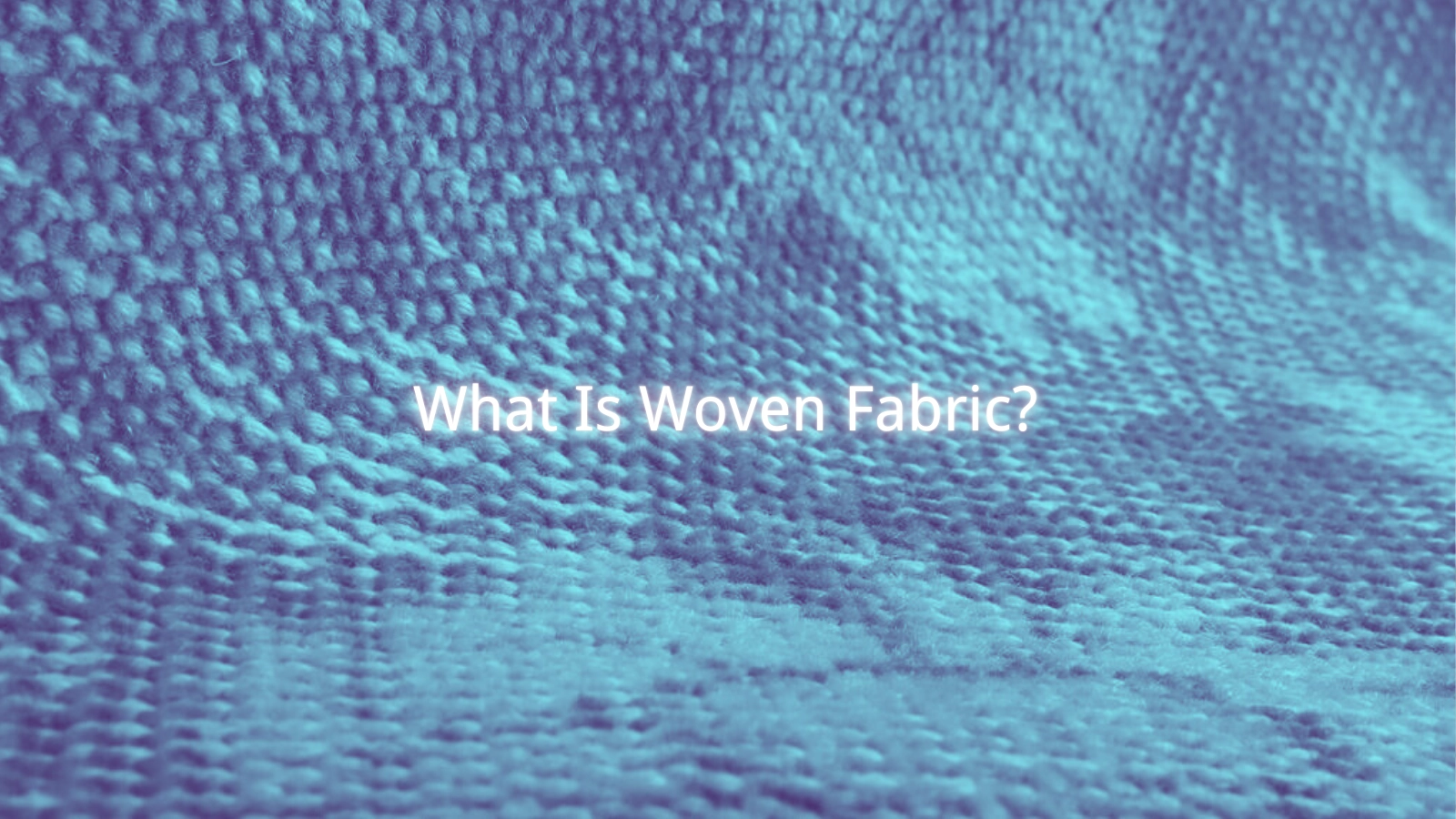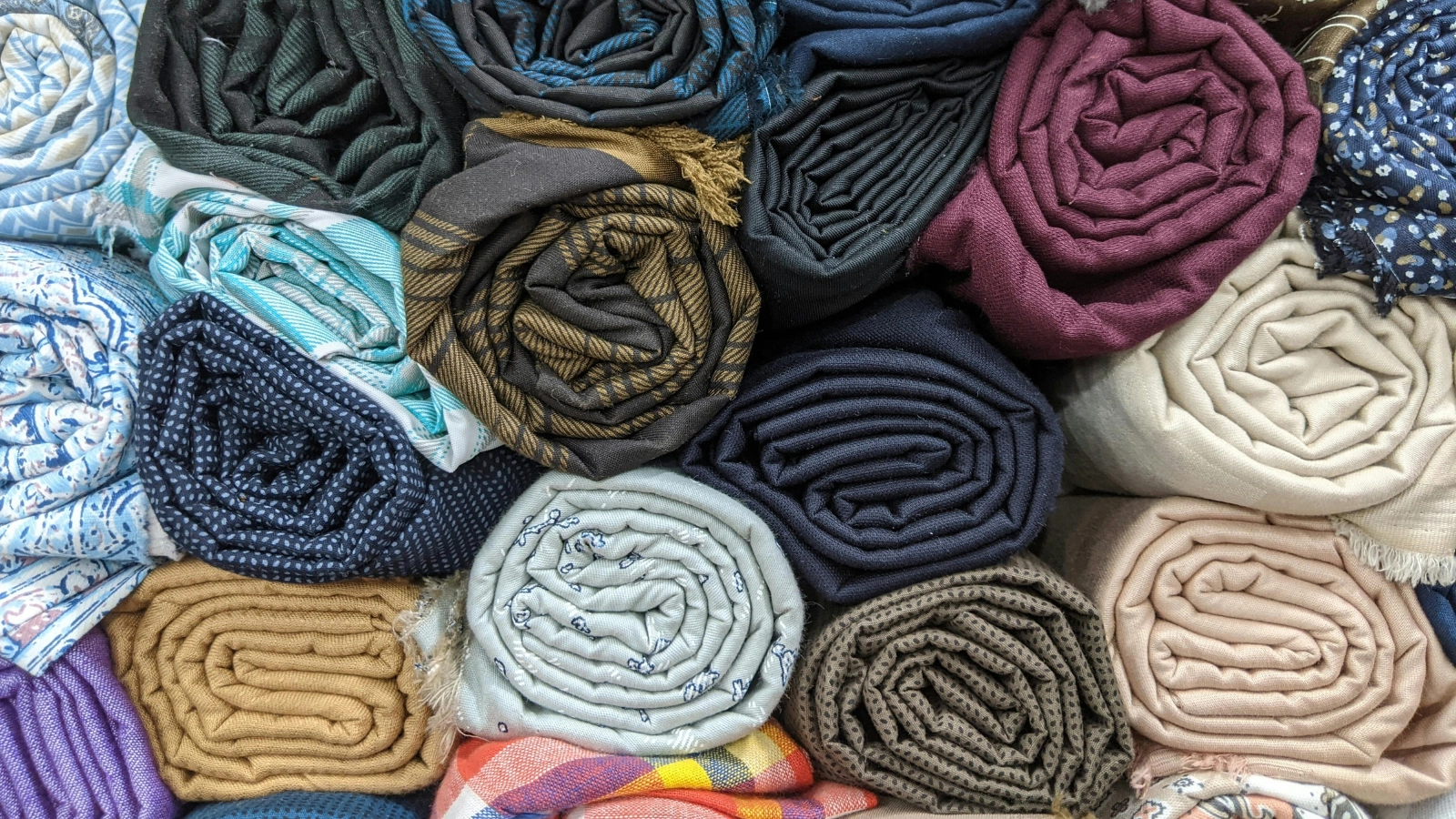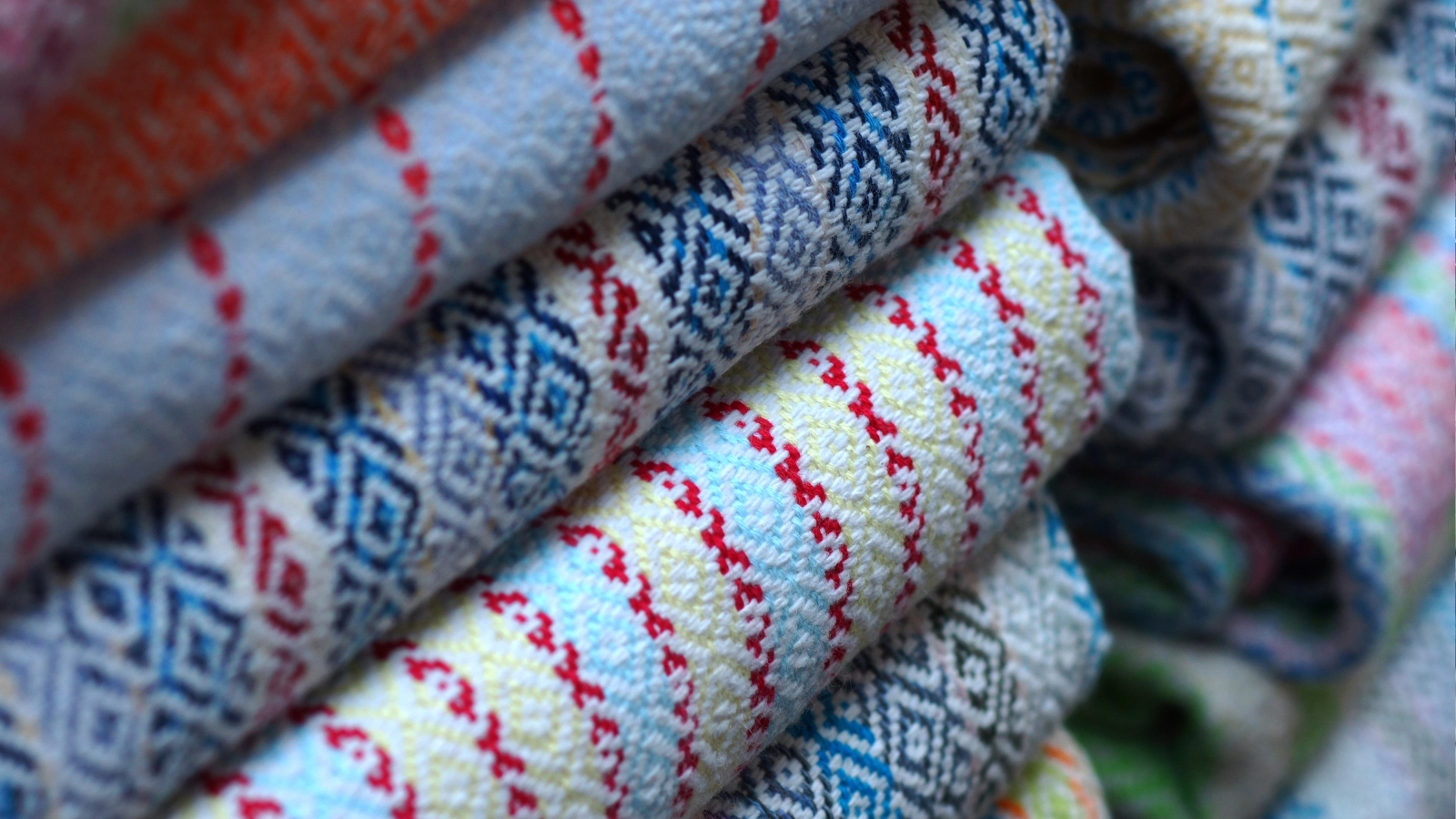What is woven fabric? Woven fabrics are in nearly every aspect of your daily life, from the clothes to the upholstery. At its core, woven fabric emerges from the precise interlacing of two yarn sets: the warp (vertical) and weft (horizontal).
This basic concept has remained unchanged since ancient times. However, modern manufacturing has transformed weaving into a sophisticated process. Weaving produces fabrics with specific properties for countless applications. Let's explore how this fundamental textile construction shapes our material world.
Key Takeaways
- Woven fabric is made by interlacing two sets of yarns (warp and weft) at right angles.
- The fabric is produced on a loom using different weaving patterns to achieve various textures and properties.
- Common materials used include natural fibers as well as synthetic fibers.
- Woven fabrics are famous for their strength, stability, and ability to maintain shape.
What Is Woven Fabric?

Let's begin our discussion on woven fabric by first explaining what it actually entails.
History and Origins
The earliest woven textiles used natural fibers like flax, wool, and cotton. A revolutionary advancement occurred around 3000 BC with the invention of the loom. It transformed production efficiency and design capabilities.
By the Middle Ages, specialized weaving guilds emerged across Europe. They established regional expertise in specific fabric types, particularly England's renowned woolen textiles.
The Industrial Revolution made fabric more accessible by using machines to produce it in large quantities.
Materials Used
Both natural and synthetic fibers like polyester exist in today's types of woven fabrics. Cotton provides breathability and moisture absorption. Conversely, synthetic materials deliver enhanced strength and specialized performance features.
The fiber selection determines your fabric's characteristics, from weight to texture. Tightly woven constructions offer stability and strength, while loosely woven allows flexibility.
Manufacturing processes include finishing treatments to add water resistance or flame retardancy. These will expand the fabric's functional capabilities in various applications.
Types of Weaving Techniques
Weaving is a process of interlacing two sets of threads, the warp and weft yarn, to produce fabric. There are eight different types of woven techniques:
- Plain Weave: This is the simplest and most common weave. The weft thread alternates over and under each warp yarn. Plain weave fabrics include muslin, percale, and taffeta.
- Twill Weave: This type of fabric features diagonal lines on the surface. It's created by passing the weft thread over one or more warp threads and then under two or more. Denim and gabardine are examples of twill woven fabrics.
- Satin Weave: Known for its smooth and shiny surface, it features minimal interlacings. The weft yarn goes over several warp yarns before passing under one. Satin weave fabrics include satin and sateen fabrics.
- Basket Weave: This is a variation of the plain weave. Two or more warp yarns are interlaced with two or more weft yarns in a simple crisscross pattern. It produces a checkerboard effect and is used in fabrics like Oxford cloth.
- Jacquard Weave: This is a complex pattern created using a jacquard loom. It allows for intricate designs, such as brocades and damasks.
- Dobby Weave: It's similar to a jacquard but with simpler patterns. Dobby weaves create small geometric designs or textures in the fabric.
- Herringbone Weave: This is a variation of the twill weave with a broken zigzag pattern. It's often found in suiting fabrics.
- Pile Weave: Pile weave woven fabrics include velvet and terry cloth. It involves weaving additional warp or weft threads that form loops or cut piles on the fabric surface.
Different Types of Woven Fabrics

Beyond the weaving techniques, here are some common examples of woven fabrics:
- Chiffon: A lightweight, sheer fabric often used in evening wear and blouses.
- Satin: This fabric has a glossy surface. It's often used in lingerie, evening gowns, and bedding.
- Poplin: A strong fabric with a plain weave, poplin is commonly used for shirts and dresses.
- Taffeta: Crisp and smooth, taffeta is often used in formal wear and linings.
- Denim: A sturdy fabric with a twill weave, commonly used for jeans and jackets.
- Linen: Made from flax fibers, linen is breathable and suitable for summer clothing.
- Flannel: A soft woven fabric, typically made from wool or cotton, used in shirts and pajamas.
- Gingham: This is a lightweight fabric with a checkered pattern. It's often used for shirts and tablecloths.
- Herringbone: This is a twill fabric with a distinctive V-shaped pattern. It's usually used in suits and outerwear.
Applications of Woven Fabrics
Woven fabrics are the foundation for countless everyday products, from your favorite t-shirts to durable industrial workwear.
Fashion and Clothing
The fashion industry heavily relies on woven fabrics to create diverse garment collections. Three primary weave patterns (plain, twill, and satin) form the foundation of modern clothing design.
These fabrics have various clothing applications. You can find them in casual denim jeans and elegant evening gowns.
Cotton-based woven materials like poplin offer breathability for everyday wear. Specialty weaves such as chiffon and organza create delicate drapes for formal attire.
Home Furnishings
Home furnishings showcase extensive applications of woven textiles across multiple functional categories.
These fabrics dominate interior design through upholstery fabric coverings. These coverings use materials like canvas and denim for their superior strength.
These versatile textiles extend to table linens, decorative pillows, and bedding. Cotton and linen excel in these areas due to their breathability and ease of maintenance.
Fabrics with distinctive weaves create elegant draperies for window treatments. These draperies can enhance the aesthetics of your living space.
Industrial Uses
Industrial sectors harness woven fabrics' unique structural properties for specialized technical purposes.
These fabrics are critical in automotive manufacturing. They're used for durable seat upholstery and interior trim components.
In construction, these materials serve as geotextiles for soil stabilization and erosion control.
The medical sector relies on woven materials for protective gear. You can find them in surgical gowns and masks.
Advantages and Disadvantages of Woven Fabrics

When selecting woven fabrics, you'll need to know their primary advantages and disadvantages.
Advantages
The structural advantages of woven fabrics make them a cornerstone in textile applications.
- Durability: Woven fabrics are generally strong. They can withstand more wear and tear compared to other fabric types.
- Shape Retention: These fabrics maintain their shape well. They're suitable for garments and items that need a structured form.
- Versatility: These fabrics come in various textures, weights, and finishes. They're suitable for various applications.
- Breathability: Many woven fabrics allow air to pass through, providing comfort in garments.
- Aesthetic Appeal: They can be designed with intricate patterns and weaves. This will enhance the visual appeal of the fabric.
Disadvantages
Woven fabrics have several disadvantages, including:
- Limited Stretchability: Woven fabrics typically have less stretch compared to knitted fabrics. This makes them less flexible and more prone to tearing under stress.
- Wrinkling: They tend to wrinkle easily. So, they need frequent ironing to maintain a neat appearance.
- Fraying: The edges of woven fabrics can fray. They need hemming or overlocking to prevent unraveling.
- Cost: The production process for woven fabrics can be more complex and time-consuming. This sometimes leads to higher costs.
- Stiffness: They may feel stiffer and less comfortable against the skin.
The Difference Between Knitted and Woven Fabrics
When you examine woven fabrics, you'll find they're created by weaving perpendicular yarns. This results in superior durability and shape retention. They don't stretch considerably unless elastic fibers are added. Woven fabrics also resist unraveling when cut and maintain their structure better.
In contrast, knitted fabrics form from interconnected loops. They provide natural elasticity and comfort but less stability. However, knitted fabrics are prone to stretching out. They need careful handling when cut to prevent unraveling.
Conclusion
Woven fabrics are crucial in our daily lives. Their unique construction offers durability, stability, and a wide range of textures. Understanding their pros and cons can help us make informed choices for various uses.
Overall, woven fabrics remain a fundamental component of the textile industry. They reflect both tradition and innovation.
Learn more fabric knowledge on the Longan Craft Blog, and dive into the fabric world with Longan Craft!
FAQs
What Is an Example of Woven Fabric?
Denim is a prime example of woven fabric. It features a distinctive twill weave pattern that creates the slanted ribbing you see in jeans.
Is Woven Fabric Good Quality?
Yes, woven fabrics typically offer superior quality. This is due to their durable construction, high thread counts, and dimensional stability. They maintain their shape well and provide excellent longevity.
Is Woven Fabric Stretchy?
Woven fabrics aren't naturally stretchy. They offer minimal elasticity in warp and weft directions. Diagonal stretch only occurs on the bias unless the weave includes elastic fibers such as Lycra.
Is Woven Fabric for Summer?
Yes, many woven fabrics are ideal for summer wear. Lightweight options like cotton lawn, linen, and chiffon keep you cool.


0 comments